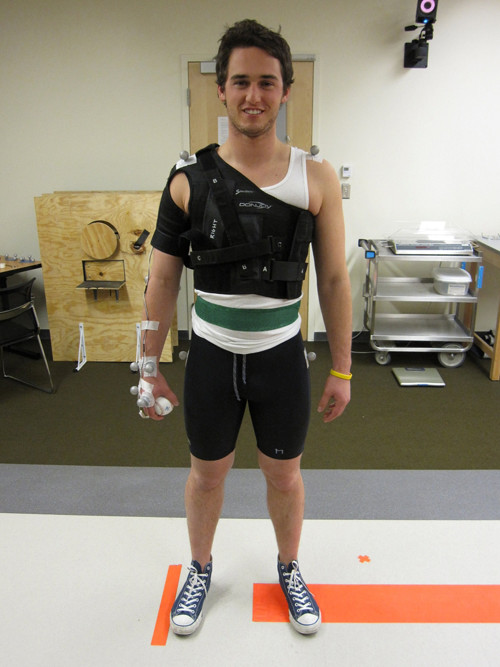Anatomy Of A Fastball: How Evolution Gave Humans Our Superior Throwing Ability

If a team of adult chimpanzees tried to play baseball against a team of Little Leaguers, they’d likely get slaughtered – and now scientists can better explain why.
The athleticism required for a fast, accurate pitch is a uniquely human accomplishment. Despite their strength, chimpanzees can’t throw very well compared to us. A good chimp fastball tops out at around 20 miles per hour, whereas 12-year-old Little League pitchers have been clocked at 60 to 70 miles per hour. Researchers think our ancestors' ability to throw -- spears, not baseballs -- may have played a key role in human evolution.
“We think [the anatomical changes that led to human throwing] evolved around 2 million years ago, and would have played an important role in early hunting,” Neil Roach, a researcher with George Washington University and Harvard University, said on a phone call with reporters. “It was a major shift in life history.”
Roach and his colleagues explain the anatomical secrets of humans’ special throwing ability in a paper appearing in the journal Nature. They think that human evolution led to three anatomical changes in particular that are key to our throwing ability: low shoulders, the ability to rotate the torso independently of the hips, and a twist in the bone of the upper arm. Together, these features of our anatomy allow us to store large amounts of energy when we cock our arms back before throwing, and release that energy quickly with the throw.
Effectively, human anatomy “allows us to use our arm like a catapult,” Roach said.
Roach and his colleagues enlisted 20 young men, mostly collegiate athletes, to be filmed while throwing baseballs. To get a 3D picture of the mechanics of throwing, the scientists attached reflective markers to the subjects, similar to the movie motion-capture technique that allowed Andy Serkis to play the animated character Gollum in “Lord of the Rings”.

For some throwing trials, the scientists used athletic braces to limit the subject’s movements – forcing shoulders to shrug, or preventing them from rotating their arms all the way. Restricting the thrower’s motions allowed the scientists to mimic the more chimp-like anatomy of our earlier ancestors, to see how that affected pitching performance.
While our throwing ability might have made us better hunters, every adaptation comes at a cost. The shrugged shoulders of a chimpanzee are a huge boon when climbing. That arrangement places much less force on a chimp’s shoulder joint when it is hanging by its arms.
Becoming better throwers (and hunters) “probably cost us the ability to seek the trees out for protection,” Roach said.
There are still some missing pieces to the puzzle. While Roach and his colleagues think the anatomical changes that led to throwing ability evolved around 2 million years ago, scientists do not have records of man-made projectiles going back earlier than 500,000 years ago. In their next experiments, Roach hopes to measure the effectiveness of primitive weapons, like wooden spears.
The study also touches on the anatomical explanations behind pitching injuries. Roach and his team note that Paleolithic hunters probably threw much less frequently than modern baseball players, who are sometimes making more than 100 pitches in a few hours. Even though we’re well-adapted for delivering fastballs, we’re not perfectly adapted, it turns out.
“Unfortunately, the ligaments and tendons in the human shoulder and elbow are not well-adapted to withstanding such repeated stretching from the high torques generated by throwing, and frequently suffer from laxity and tearing,” the researchers wrote. “Although humans’ unique ability to power high-speed throws using elastic energy may have been critical in enabling early hunting, repeated overuse of this motion can result in serious injuries in modern throwers.”
SOURCE: Roach et al. “Elastic energy storage in the shoulder and the evolution of high-speed throwing in Homo.” Nature 498: 483-487, 27 June 2013.
© Copyright IBTimes 2025. All rights reserved.





















